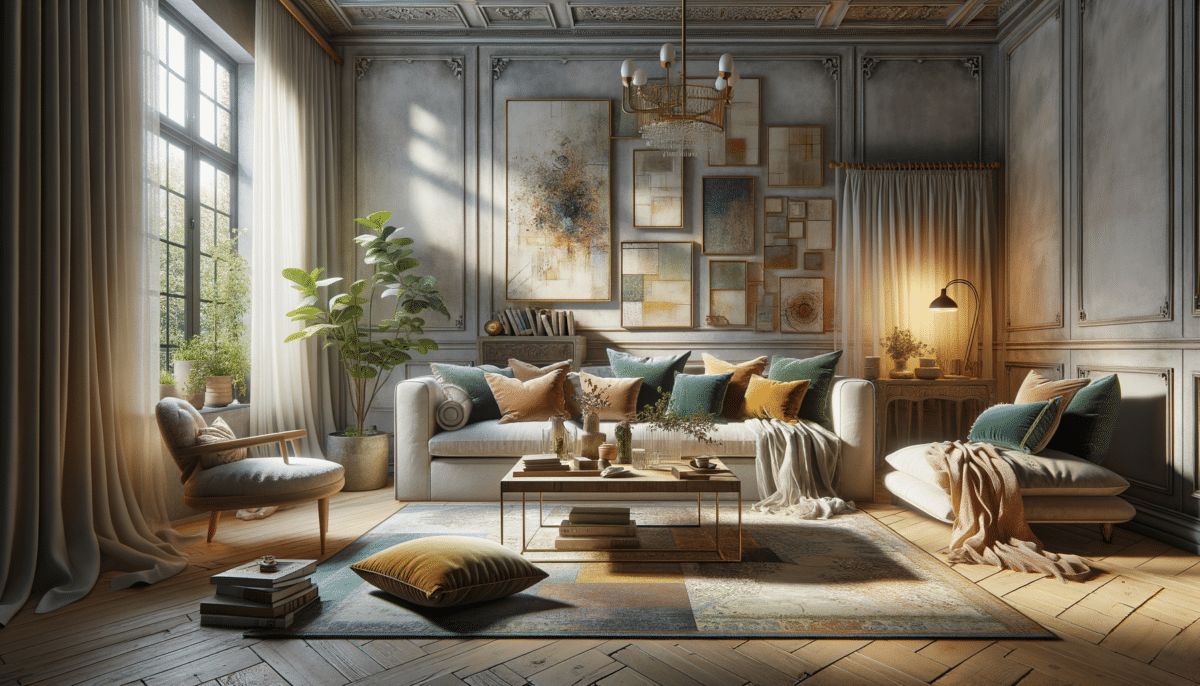Understanding the Basics of Home Decor
Home decor is more than just arranging furniture and selecting paint colors; it is an art form that reflects your personality and lifestyle. The foundation of effective home decor lies in understanding the elements that contribute to a harmonious living space. These elements include balance, color, texture, and proportion. Balance ensures that your space feels stable and evenly distributed, whether through symmetrical, asymmetrical, or radial arrangements.
Color plays a pivotal role in setting the mood of a room. Warm colors like red and yellow can create a cozy and inviting atmosphere, while cool colors such as blue and green tend to be calming and refreshing. Texture adds depth and interest, preventing a room from feeling flat. Incorporating a mix of textures through fabrics, rugs, and accessories can enhance the tactile experience of a space.
Proportion and scale are crucial in ensuring that furniture and decor items fit well within a room. Oversized furniture in a small room can feel overwhelming, while small pieces in a large room may seem lost. Achieving the right balance of these elements is key to successful home decor.
Choosing a Style That Suits You
When it comes to home decor, selecting a style that resonates with your personal taste is paramount. Popular styles include modern, traditional, rustic, and eclectic, each offering distinct characteristics and appeal. Modern design is known for its clean lines, minimalist approach, and use of neutral colors. It often incorporates materials like glass and steel, creating a sleek and sophisticated look.
Traditional decor, on the other hand, is characterized by classic furnishings, rich colors, and ornate details. It exudes a sense of warmth and timelessness. Rustic style embraces natural materials such as wood and stone, with a focus on creating a cozy and inviting atmosphere. It often features handcrafted items and vintage pieces.
Eclectic style is perfect for those who enjoy mixing and matching different elements. It allows for a more personalized and unique space, combining various styles, colors, and textures. The key to achieving a cohesive eclectic look is to find a common thread that ties everything together, such as a consistent color palette or theme.
Incorporating Functional Decor
Functional decor is an essential aspect of home design, merging aesthetics with practicality. This approach ensures that every piece not only looks good but also serves a purpose. For instance, choosing furniture with built-in storage can help keep your space organized and clutter-free. Consider a coffee table with drawers or a bed with under-storage to maximize space efficiency.
Lighting is another crucial component of functional decor. It can transform the ambiance of a room while providing necessary illumination. Layering different types of lighting, such as ambient, task, and accent lighting, can create a versatile and dynamic environment. Pendant lights, floor lamps, and wall sconces are popular choices that add both style and functionality.
Another way to incorporate functional decor is through multi-purpose furniture. Pieces like sofa beds, extendable dining tables, and modular seating can adapt to different needs and occasions, making them ideal for smaller spaces or homes that entertain frequently.
Personalizing Your Space with Accessories
Accessories are the finishing touches that bring personality and character to your home decor. They include items like artwork, throw pillows, vases, and rugs, which can be easily changed or updated to refresh a space. When selecting accessories, consider the overall color scheme and style of the room to ensure cohesion.
Artwork is a powerful way to express your taste and interests. Whether it’s a large statement piece or a gallery wall of smaller works, art adds visual interest and can be a great conversation starter. Throw pillows and blankets are another way to introduce color and texture, making a room feel more inviting.
Plants and flowers are also excellent accessories that bring life and freshness into a space. They can be used to fill empty corners, add height to a room, or create a focal point. Additionally, plants have the added benefit of purifying the air and improving indoor air quality.
Adapting Trends to Your Home
Home decor trends are constantly evolving, offering new ideas and inspiration for refreshing your space. However, it’s important to adapt these trends to suit your personal style and the existing decor of your home. One current trend is the use of sustainable and eco-friendly materials, which not only contribute to a healthier environment but also add a natural and organic feel to a space.
Another popular trend is the incorporation of bold colors and patterns. While neutral palettes have long been favored, adding a pop of color or a striking pattern can create a dynamic and energetic environment. Consider using bold colors in smaller doses, such as an accent wall or decorative accessories, to avoid overwhelming the space.
Minimalism continues to be a strong influence in home decor, focusing on simplicity and functionality. This trend encourages decluttering and emphasizes quality over quantity. By carefully selecting pieces that serve a purpose and bring joy, you can create a serene and clutter-free home.
